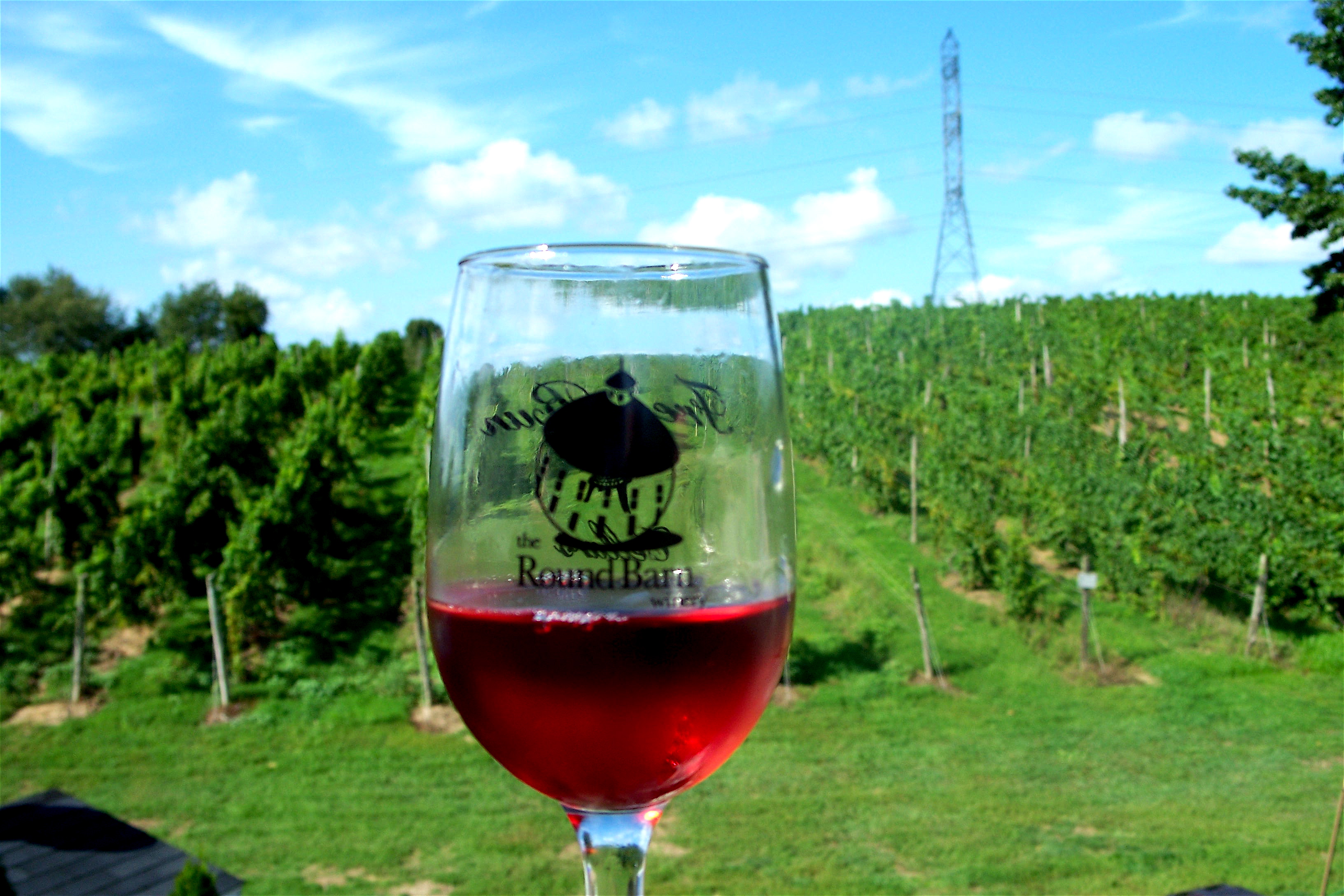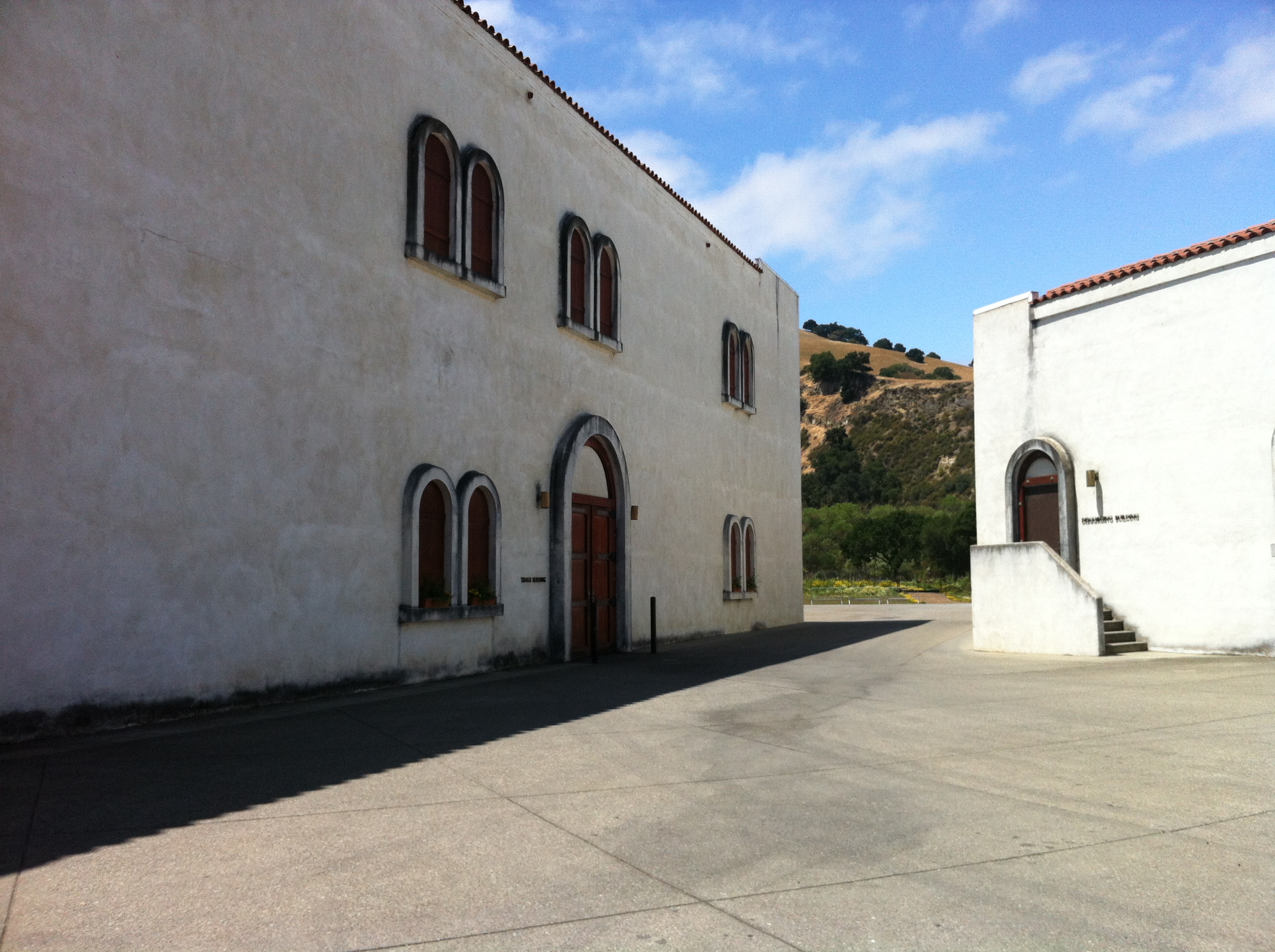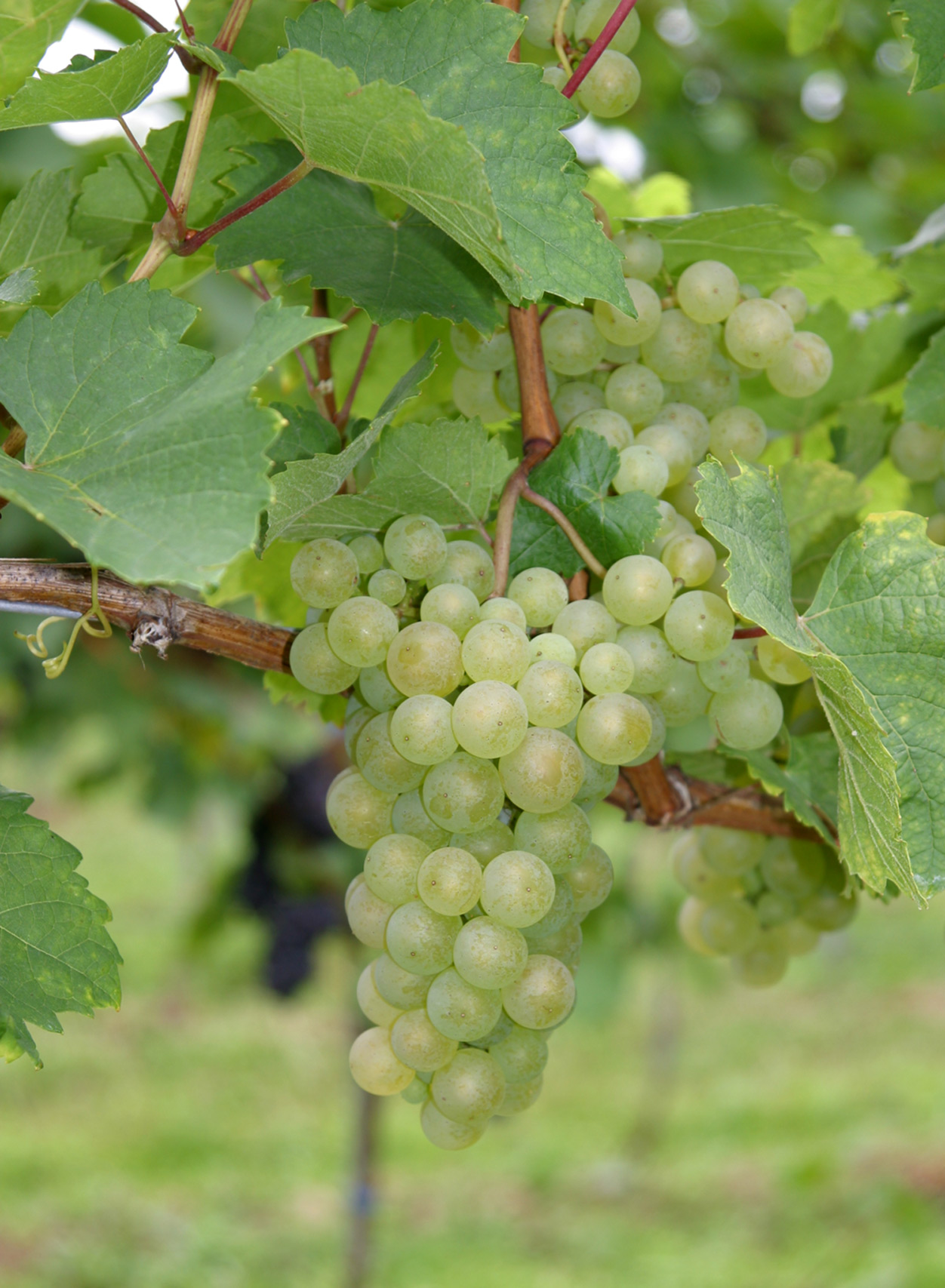|
Michigan Wine
Michigan wine refers to any wine that is made in the state of Michigan in the United States. As of 2020, there were under wine-grape cultivation and over 200 commercial wineries in Michigan, producing of wine. According to another count there were 112 operating wineries in Michigan in 2007. Wine and enotourism were estimated in 2017 to have an economic impact of $5.4 billion, up from $300 million in 2007. Most of the quality bottled wine of Michigan is produced in the five American Viticultural Areas (AVAs) of Fennville AVA, Lake Michigan Shore AVA, Leelanau Peninsula AVA, Old Mission Peninsula AVA, and the Tip of the Mitt AVA. There are also a few disjunct wineries in every region of the state, including some in the Upper Peninsula that have opened over the past several years. In addition to grape wine, Michigan is a leader in the production of fruit wines such as cherry wine. History The traditional wines of Michigan were sweet wines, often made from grape varieties nati ... [...More Info...] [...Related Items...] OR: [Wikipedia] [Google] [Baidu] |
Chateau Chantal
Chateau Chantal is a winery located on the Old Mission Peninsula, only a few miles north of Traverse City, in Grand Traverse County, Michigan. The chateau sits atop one of the highest points on the Peninsula Township, Michigan, Old Mission Peninsula and has views of both Grand Traverse Bay, East and West arms of Grand Traverse Bay. The winery is a European style chateau on a estate. Chantal is in an official American Viticultural Area, one of five in Michigan, a state that specializes in Vitis vinifera, vinifera, hybrid and native grape varieties. The Chateau has a tasting room, an eleven-room bed and breakfast, and a hospitality room where cooking classes and Jazz at Sunset are hosted. History While Chateau Chantal was not incorporated until 1991, its history began in December 1983, when Robert and Nadine Begin formed Begin Orchards and purchased 60 acres of cherry orchards on the company's current site. Between 1984 and 1991, the Begins cleared much of this land, planted ... [...More Info...] [...Related Items...] OR: [Wikipedia] [Google] [Baidu] |
Concord (grape)
The Concord grape is a cultivar derived from the grape species ''Vitis labrusca'' (also known as fox grape) that are used as table grapes, wine grapes and juice grapes. They are often used to make grape Jelly (fruit preserves), jelly, grape juice, grape pies, grape-flavored soft drinks, and candy. The grape is sometimes used to make wine, particularly Sacramental_wine, sacramental and kosher wine. Traditionally, most commercially produced Concord wines have been finished sweet, but dry versions are possible if adequate fruit ripeness (wine), fruit ripeness is achieved. The grape is named after the Concord, MA, town in Massachusetts where it was developed. The skin of a Concord grape is typically dark blue or purple, and often is covered with a glaucous epicuticular wax "bloom" that can be rubbed off. It is a slip-skin variety, meaning that the skin is easily separated from the fruit. Concord grapes have large seeds and are highly aromatic. The Concord grape is particularly prone ... [...More Info...] [...Related Items...] OR: [Wikipedia] [Google] [Baidu] |
Sauvignon Blanc
is a green-skinned grape variety that originates from the Bordeaux region of France. The grape most likely gets its name from the French words ''sauvage'' ("wild") and ''blanc'' ("white") due to its early origins as an indigenous grape in South West France. It is possibly a descendant of Savagnin. is planted in many of the world's wine regions, producing a crisp, dry, and refreshing white varietal wine. The grape is also a component of the famous dessert wines from Sauternes and Barsac. Sauvignon blanc is widely cultivated in France, Chile, Romania, Canada, Australia, New Zealand, South Africa, Bulgaria, the states of Oregon, Washington, and California in the US. Some New World Sauvignon blancs, particularly from California, may also be called "Fumé Blanc", a marketing term coined by Robert Mondavi in reference to Pouilly-Fumé. Depending on the climate, the flavor can range from aggressively grassy to sweetly tropical. In cooler climates, the grape has a tendency to pr ... [...More Info...] [...Related Items...] OR: [Wikipedia] [Google] [Baidu] |
Riesling
Riesling (, ; ) is a white grape variety that originated in the Rhine region. Riesling is an aromatic grape variety displaying flowery, almost perfumed, aromas as well as high acidity. It is used to make dry, semi-sweet, sweet, and sparkling white wines. Riesling wines are usually varietally pure and are seldom oaked. , Riesling was estimated to be the world's 20th most grown variety at (with an increasing trend),J. Robinson (ed) ''The Oxford Companion to Wine'' Third Edition, Oxford University Press 2006, p. 746: ''"Vine varieties"'', . but in terms of importance for quality wines, it is usually included in the "top three" white wine varieties together with Chardonnay and Sauvignon blanc. Riesling is a variety that is highly "''terroir''-expressive", meaning that the character of Riesling wines is greatly influenced by the wine's place of origin. In cool climates (such as many German wine regions), Riesling wines tend to exhibit apple and tree fruit notes with noticeable leve ... [...More Info...] [...Related Items...] OR: [Wikipedia] [Google] [Baidu] |
Pinot Noir
Pinot Noir () is a red-wine grape variety of the species ''Vitis vinifera''. The name may also refer to wines created predominantly from pinot noir grapes. The name is derived from the French language, French words for ''pine'' and ''black.'' The word ''pine'' alludes to the grape variety having tightly clustered, pinecone–shaped bunches of fruit. Pinot Noir grapes are grown around the world, mostly in cooler climates, and the grape is chiefly associated with the Burgundy (wine), Burgundy region of France (wine), France. Pinot Noir is now used to make red wines around the world, as well as champagne, Sparkling wine, sparkling white wines such as the Italian wine, Italian Franciacorta, and Wine from the United Kingdom, English sparkling wines. Regions that have gained a reputation for red pinot noir wines include the Willamette Valley (wine), Willamette Valley of Oregon (wine), Oregon; the Carneros (AVA), Carneros, Central Coast (AVA), Central Coast, Sonoma Coast AVA, Sonoma ... [...More Info...] [...Related Items...] OR: [Wikipedia] [Google] [Baidu] |
Pinot Gris
Pinot Gris, Pinot Grigio (, ) or Grauburgunder is a white wine grape variety of the species ''Vitis vinifera''. Thought to be a mutant clone of the Pinot Noir variety, it normally has a grayish-blue fruit, accounting for its name, but the grapes can have a brownish pink to black and even white appearance. The word ''pinot'' could have been given to it because the grapes grow in small pinecone-shaped clusters. The wines produced from this grape also vary in color from a deep golden yellow to copper and even a light shade of pink,J. Robinson: ''Vines Grapes & Wines'', p. 158. Mitchell Beazley 1986 . and it is one of the more popular grapes for skin-contact wine. Pinot Gris is grown around the globe, with the "spicy" full-bodied Alsatian and lighter-bodied, more acidic Italian styles being most widely recognized. The Alsatian style, often duplicated in New World wine regions such as Marlborough, Tasmania, South Australia, Washington, Oregon, and South Africa tend to have moder ... [...More Info...] [...Related Items...] OR: [Wikipedia] [Google] [Baidu] |
Pinot Blanc
Pinot blanc is a white wine grape. It is a point genetic mutation of Pinot noir. Pinot noir is genetically unstable and will occasionally experience a point mutation in which a vine bears all black fruit except for one cane which produces white fruit. Origins and regional production In Alsace, Germany, Luxembourg, Italy, Hungary, Czech Republic and Slovakia, the wine produced from this grape is a full-bodied white. In Germany, where it is known as Weißer Burgunder or Weißburgunder, there were of Pinot blanc in 2018. The most powerful versions are usually made in Baden and Palatinate. In 2018, there were of Pinot blanc in France, with most of the plantations found in Alsace, where it is used for both still white wines and is the most common variety used for sparkling wine, Crémant d'Alsace. Somewhat confusingly, the designation "Pinot blanc" for Alsace AOC wine does not necessarily mean that the wine is varietally pure Pinot blanc. (This is in difference to Pinot gris, wh ... [...More Info...] [...Related Items...] OR: [Wikipedia] [Google] [Baidu] |
Niagara (grape)
Niagara grapes are a variety of the North American grape species ''Vitis labrusca'' (botanical family Vitaceae) and are used as table grapes and for wines, as well as jams and juice. Niagara is the leading green grape grown in the United States. A purple variety, known as "pink" niagara (niágara rosada), exists and is the main niagara cultivated in southern Brazil, principally in the states of São Paulo, where the variety first occurred in 1933, and Rio Grande do Sul. The Niagara grape was created in Niagara County, New York, in 1868 when Claudius L. Hoag and Benjamin W. Clark cross-bred Concord grapes with white Cassady grapes. It was first sold commercially in 1882. Niagara grapes are considered to be poor shipping grapes, and so are usually only found near where they are grown. They are most commonly found in the United States in New York, Pennsylvania, New Jersey, Michigan, Washington, and Ohio, and are also grown in Ontario in Canada, as well as in Brazil, and New Ze ... [...More Info...] [...Related Items...] OR: [Wikipedia] [Google] [Baidu] |
Merlot
Merlot is a dark blue–colored wine grape variety, that is used as both a blending grape and for varietal wines. The name ''Merlot'' is thought to be a diminutive of ''merle'', the French name for the blackbird, probably a reference to the color of the grape. Its softness and "fleshiness," combined with its earlier ripening, make Merlot a popular grape for blending with the sterner, later-ripening Cabernet Sauvignon, which tends to be higher in tannin. Along with Cabernet Sauvignon, Cabernet Franc, Malbec and Petit Verdot, Merlot is one of the primary grapes used in Bordeaux wine, and it is the most widely planted grape in the Bordeaux wine regions. Merlot is also one of the most popular red wine varietals in many markets. This flexibility has helped to make it one of the world's most planted grape varieties. As of 2004, Merlot was estimated to be the third most grown variety at globally.J. Robinson (ed) ''The Oxford Companion to Wine'' Third Edition, Oxford University Pre ... [...More Info...] [...Related Items...] OR: [Wikipedia] [Google] [Baidu] |
Marechal Foch
Ferdinand Foch ( , ; 2 October 1851 – 20 March 1929) was a French general and military theorist who served as the Supreme Allied Commander during the First World War. An aggressive, even reckless commander at the First Marne, Flanders and Artois campaigns of 1914–1916, Foch became the Allied Commander-in-Chief in late March 1918 in the face of the all-out German spring offensive, which pushed the Allies back using fresh soldiers and new tactics that trenches could not withstand. He successfully coordinated the French, British and American efforts into a coherent whole, deftly handling his strategic reserves. He stopped the German offensive and launched a war-winning counterattack. In November 1918, Marshal Foch accepted the German cessation of hostilities and was present at the Armistice of 11 November 1918. At the outbreak of war in August 1914, Foch's XX Corps participated in the brief invasion of Germany before retreating in the face of a German counter-attack and succ ... [...More Info...] [...Related Items...] OR: [Wikipedia] [Google] [Baidu] |
Leon Millot
Leon, Léon (French) or León (Spanish) may refer to: Places Europe * León, Spain, capital city of the Province of León * Province of León, Spain * Kingdom of León, an independent state in the Iberian Peninsula from 910 to 1230 and again from 1296 to 1301 * León (historical region), composed of the Spanish provinces León, Salamanca, and Zamora * Viscounty of Léon, a feudal state in France during the 11th to 13th centuries * Saint-Pol-de-Léon, a commune in Brittany, France * Léon, Landes, a commune in Aquitaine, France * Isla de León, a Spanish island * Leon (Souda Bay), an islet in Souda Bay, Chania, on the island of Crete North America * León, Guanajuato, Mexico, a large city * Leon, California, United States, a ghost town * Leon, Iowa, United States * Leon, Kansas, United States * Leon, New York, United States * Leon, Oklahoma, United States * Leon, Virginia, United States * Leon, West Virginia, United States * Leon, Wisconsin (other), United States, severa ... [...More Info...] [...Related Items...] OR: [Wikipedia] [Google] [Baidu] |
Blaufränkisch
Blaufränkisch (German for ''blue Frankish'') is a dark-skinned variety of grape used for red wine. and California, DNA profiling has shown that Blaufränkisch is a cross between Gouais blanc (Weißer Heunisch; male parent) and Blaue Zimmettraube (female parent; the offspring of Blauer Gänsfüsser). Historical sources of grapevine classification have provided very solid evidence that the geographic area of origin of the variety is Lower Styria (today Slovenian Styria). For a long time before the application of DNA analysis, Blaufränkisch was erroneously thought to be a clone of the Gamay grape variety, due to certain similarities in morphology and possibly due to its name ''Gamé'' in Bulgaria. The German name Lemberger derives from the fact that it was imported to Germany in the 19th century from Lemberg in Lower Styria in present-day Slovenia and then in the Austro-Hungarian Empire. An 1877 export of ''Lembergerreben'' to Germany has been recorded. The almost identical na ... [...More Info...] [...Related Items...] OR: [Wikipedia] [Google] [Baidu] |







